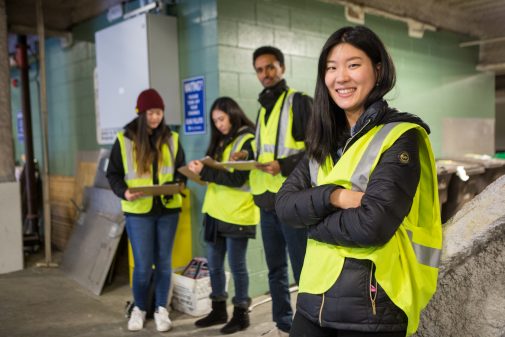-
November 06, 2018
Common carrier lockers are the future of receiving deliveries

Seattle locals might soon be carrying home their Amazon orders and last minute Christmas gifts from common carrier lockers, rather than having to sit at home to make sure they don’t miss the delivery guy with their package for the third time.
UW’s Urban Freight Lab (UFL) at the Supply Chain Transportation and Logistics Center (SCTL) is looking into how to reduce delivery time and solve Seattle’s congestion problem with the use of parcel lockers.
The city of Seattle is the fourth most congested city in the U.S., having a total population of 725,000, a number that only grows with the addition of new residents expecting instant gratification, especially when it comes to their online orders.
The sheer volume of citizens living in urban Seattle can be accounted for all the rush hour traffic jams and the annoying lack of street parking, leaving it no wonder why businesses are having trouble making quick deliveries.
UFL believes common carrier lockers are the answer: by providing a single drop-off location, local residents can pick up their packages at their own convenience, meaning truck drivers will no longer be taking up space on roads or in parking lots, alleviating some of the strain on Seattle’s crowded-enough streets.
With support from a variety of sponsors, including PacTrans, Anne Goodchild, the director of SCTL and a UW professor of civil and environmental engineering, and her team turned their attention to the Seattle Municipal Tower (SMT), where they would conduct the first of many tests that would allow them to examine how the lockers would affect package delivery.
At the tower, the parcel lockers showed a reduction in the time that drivers had spent in the tower by 78 percent, as well as provided a safe, automated self-service system for users.

After the success SCTL saw at the SMT, the team decided to test their lockers at transit stations, where individuals could retrieve their packages while they were in the process of commuting.
However, SCTL first had to make sure that it wouldn’t be an inconvenience for transportation riders to retrieve their parcels from transit and Link stations.
When a survey was completed by riders during both the morning and evening rush hours over the course of five days at the UW, Capitol Hill, and Westlake light-rail stations, the team found that 67 percent of the 43 individuals surveyed at the UW station said they would make use of the lockers, and an additional 40 percent of riders also took interest in the idea at the Capitol Hill and Westlake stations.
Based on the promising feedback they had received, researchers at SCTL have begun to work with the Seattle Department of Transportation (SDOT), Sound Transit, and UPS to scout out other locker locations at the three stations, having already identified five potential sites.
As of now, UFL does not have the funds to pursue any more test pilots, but the group is confident in its research and has an optimistic outlook on the future of common carrier lockers that serve to deliver to the public safely and efficiently.
UFL is composed of professionals who work to manage public space, such as transportation engineers and urban planners, and supports their collaboration with retailers, freight carriers, technology companies, and multifamily and commercial developers and operators to come up with new and innovative solutions in urban goods delivery.


